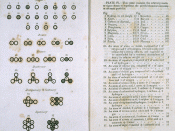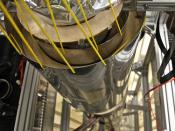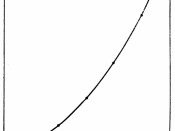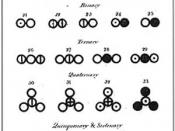The Atomic Theory In this report I will give a history on the development of the atomic theory. I will cover some of the most important dates in the development of atomic theory.
An atom was first thought of by the Ancient Greeks who believed that matter was made of smaller particles called elements. The name they gave to these particles was the atom.
In 1776 the man known as "The Father of Atomic Theory", John Dalton was born in England. He is known as the father of atomic theory because he is the one who discovered many of the different masses for different elements, he also discovered the different proportions which molecules are formed in. Dalton also discovered the inert gases, and their failure to react with other substances.
In 1969 a Russian chemist, named Mendeleyev who a renowned teacher developed, the periodic law of the properties of the chemical elements (which states that elements show a regular pattern when they are arranged according to their atomic masses).
Mendeleyev wrote a two-volume book called Principles of chemistry (1868-1870), which later became a classic. These books included an improved version of the periodic table.
Sir Joseph Thomson, another important person in the development of the atomic theory, was born in 1906. Thomson won the Nobel Prize in physics (1906) for his work in the conduction of electricty through gases.
He discovered the electron by using cathode rays. An electron is the smallest particle of an atom, the charge on an electron is negative.
Ernest Rutherford, who was born in 1871 identified the three main components of radioactivity: alpha, beta, and gamma particles. Radioactivity was discovered by a French scientist named Becquerel. Rutherford was also the first one to disdcover the true structure of an atom. An atom has a central heavy nucleus with an electron cloud surrounding it. Ernest was also the credited with the first man made nuclear reaction. This accomplishment came in 1919.
A colleague of Rutherford's at Cambridge University named James Chadwick discovered the third fundamental particle that makes up the atom: the neutron. This important discovery led to the making of the first atom bomb and to the discovery of nuclear fission. The neutron has a relative mass of one and has no negative or positive charge (neutral). Chadwick was strongly involved with British atomic bomb effort, during World War II.
During the last to years of the war, Chadwick helped with the U.S. nuclear weapons research. The first atomic bomb was developed with the help of Chadwick, and because of this he earned the Nobel Prize for Physics in 1935.




